Integrating Solar Wall Mount Lights with Smart Home Systems
The rise of smart home technology has transformed how we interact with our living spaces, and solar wall mount lights are no exception. These eco-friendly lighting solutions, powered by renewable solar energy, are increasingly being integrated with smart home systems to enhance security, convenience, and energy efficiency. By combining motion sensor technology with seamless connectivity to platforms like Alexa or Google Home, these lights offer homeowners a sustainable and intelligent way to illuminate outdoor areas. This article explores the best placement for safety, the role of motion sensor technology, and strategies for smart home integration, providing a comprehensive guide to maximizing the potential of solar wall mount lights.
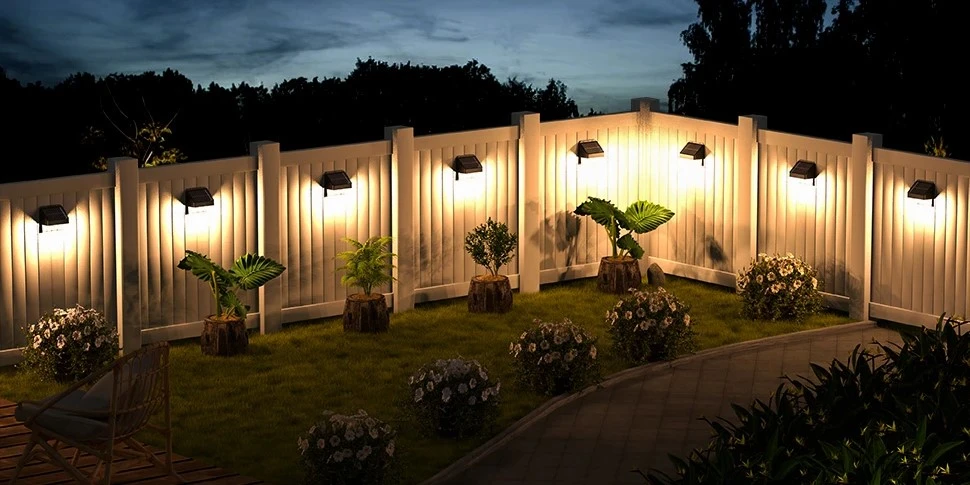
The Appeal of Solar Wall Mount Lights
Solar wall mount lights harness sunlight through photovoltaic (PV) panels, storing energy in rechargeable batteries to power LED bulbs at night. Their wire-free design eliminates the need for complex electrical installations, making them ideal for illuminating pathways, entrances, and patios. When paired with smart home systems, these lights offer advanced features like remote control, scheduling, and motion-activated alerts, enhancing both functionality and outdoor security. The combination of sustainability and smart technology positions solar wall mount lights as a forward-thinking choice for modern homes.
Best Placement for Safety
Strategic placement of solar wall mount lights is critical to maximizing their effectiveness for outdoor security. The primary goal is to illuminate high-traffic areas and potential entry points to deter intruders while ensuring safe navigation. Experts recommend mounting lights 6-10 feet above the ground to prevent tampering and optimize motion sensor technology coverage SafeWise, 2025. Key placement tips include:
- Entrances and Exits: Position lights near front doors, back doors, and garage entrances to ensure visibility for residents and to deter potential intruders. A motion sensor light at these locations can activate upon approach, providing a welcoming effect and enhancing outdoor security Coohom, 2025.
- Pathways and Walkways: Install solar wall mount lights along pathways or stairs to prevent trips and falls. For example, the AloftSun Solar Landscape Lights, with a 33-foot detection range, are ideal for illuminating walkways Better Homes & Gardens, 2025.
- Perimeter Coverage: Place lights along fences or property boundaries to create a well-lit perimeter. Bitpott solar lights, with their IP65 waterproof rating, are suitable for such placements, enduring harsh weather while providing reliable illumination Amazon Canada, 2025.
- Avoiding Obstructions: Ensure sensors have a clear line of sight, avoiding foliage, vents, or busy sidewalks that could trigger false activations. The motion sensor light should be angled toward likely paths of movement, such as driveways or entryways SmartVisionPlus, 2024.
For solar panel efficiency, position the PV panel to receive at least 6 hours of direct sunlight daily. Regular cleaning of the panel prevents dust or debris from reducing charging efficiency Coohom, 2025.
Leveraging Motion Sensor Technology
Motion sensor technology is a cornerstone of modern solar wall mount lights, enhancing both security and energy efficiency. Passive Infrared (PIR) sensors detect heat signatures from moving objects, such as people or animals, triggering the light to illuminate. This feature conserves battery life by activating only when needed, making it ideal for solar-powered systems with limited energy storage.
High-quality motion sensor lights, like the Maxsa Dual Head Solar Security Light, offer adjustable settings for sensitivity and illumination duration, ranging from 10 seconds to four minutes Better Homes & Gardens, 2025. The Linkind Solar Wall Lights, for instance, feature a 120-degree detection angle and a 20-foot range, automatically dimming after 25 seconds of inactivity to save energy Linkind, 2024. Key benefits of motion sensor technology include:
- Enhanced Security: Motion-activated lights deter intruders by illuminating dark areas, making it harder for trespassers to go unnoticed Bob Vila, 2024.
- Energy Efficiency: By activating only when motion is detected, these lights extend battery lifespan, crucial for solar-powered systems in low-sunlight conditions.
- Customizable Settings: Many models allow users to adjust sensitivity to avoid false triggers from pets or foliage, ensuring reliable performance Coohom, 2025.
To optimize motion sensor technology, mount sensors at a height of 6-8 feet and avoid placing them near heat sources like vents or radiators, which can cause false alarms SafeWise, 2025.
Smart Home Integration
Integrating solar wall mount lights with smart home systems elevates their functionality, offering remote control, automation, and enhanced outdoor security. Smart lights, such as the Ring Solar Pathlight, connect to platforms like Alexa, Google Home, or SmartThings via Wi-Fi or Bluetooth, allowing users to control settings through mobile apps or voice commands Wirecutter, 2024. Key aspects of smart home integration include:
- Remote Control and Scheduling: Users can turn lights on/off, adjust brightness, or set schedules remotely. For example, the Linkind Smart Solar Spotlight SL5 supports group control and preset scenes, enabling customized lighting for different times of the day Linkind, 2024.
- Motion-Triggered Alerts: Smart motion sensor lights can send notifications to your smartphone when motion is detected, providing real-time security updates. The Ring Solar Floodlight, for instance, integrates with the Ring Home app to alert users of activity Real Simple, 2025.
- Seamless Ecosystem Integration: Pairing lights with other smart devices, such as security cameras or doorbells, creates a cohesive security system. The Winees F2 PRO Dual Lens Floodlight Camera combines motion sensor technology with surveillance, offering a 180-degree field of view and real-time alerts Linkind, 2024.
- Energy-Saving Automation: Smart systems can optimize solar panel efficiency by adjusting light activation based on time, weather, or battery levels, ensuring lights remain operational even in cloudy conditions.
To achieve effective smart home integration, ensure your lights are compatible with your existing smart home hub. For homes without ample sunlight, consider hybrid systems with battery backups or hardwired options for consistent performance Coohom, 2025.
Installation and Maintenance Tips
Proper installation and maintenance are crucial for ensuring the longevity and performance of solar wall mount lights in a smart home setup. Installation is typically straightforward, requiring only a drill and screws for mounting. The Bitpott Solar Pathway Lights, for example, can be installed in under 10 minutes with no wiring needed Amazon Canada, 2025. Key tips include:
- Optimal Solar Panel Placement: Angle the solar panel to maximize sunlight exposure, ideally facing south in the Northern Hemisphere. Regularly clean the panel to maintain solar panel efficiency Couleenergy, 2023.
- Sensor Calibration: Adjust motion sensor light settings to balance sensitivity and range, minimizing false triggers from small animals or environmental factors Coohom, 2025.
- Smart Hub Connectivity: Test Wi-Fi or Bluetooth connectivity during installation to ensure seamless smart home integration. Place the hub within range to avoid signal interference SafeWise, 2025.
- Regular Maintenance: Inspect batteries every 6-12 months, especially after prolonged cloudy periods, and replace them every 5-7 years to maintain battery lifespan Couleenergy, 2023.
Overcoming Common Challenges
While solar wall mount lights offer numerous benefits, challenges such as limited sunlight, false sensor triggers, and connectivity issues can arise. Solutions include:
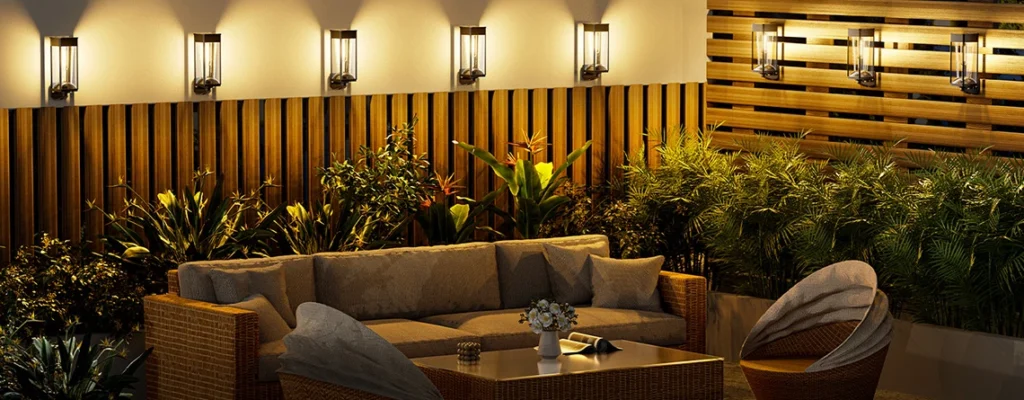
- Limited Sunlight: In shaded areas, opt for lights with larger battery capacities or hybrid models with battery backups. The Urpower Solar Lights, while less bright, are suitable for low-sunlight areas due to their efficient design The Spruce, 2025.
- False Triggers: Fine-tune motion sensor technology settings to reduce sensitivity and avoid obstructions like moving foliage. Regular testing ensures optimal performance SmartVisionPlus, 2024.
- Connectivity Issues: Ensure your smart hub is within range and update firmware regularly to maintain reliable smart home integration Linkind, 2024.
Innovations Driving the Future
Advancements in solar wall mount lights are enhancing their compatibility with smart home systems. Innovations like bifacial solar panels, which capture sunlight from both sides, improve solar panel efficiency by up to 20% YINGHAO, 2024. Smart battery management systems (BMS) extend battery lifespan by preventing overcharging, while AI-driven motion sensors, like those in the Winees F2 PRO, offer precise detection and integration with security cameras Linkind, 2024. These advancements ensure solar wall mount lights remain a cutting-edge solution for outdoor security.
Practical Tips for Consumers
To maximize the benefits of solar wall mount lights in a smart home setup, consider the following:
- Choose Compatible Models: Select lights with Wi-Fi or Bluetooth for seamless smart home integration. Verify compatibility with your smart home platform.
- Prioritize IP Ratings: Opt for lights with an IP65 rating or higher for durability in harsh weather Real Simple, 2025.
- Test Motion Sensors: After installation, walk through the detection zone to ensure the motion sensor light activates correctly SmartVisionPlus, 2024.
- Plan for Sunlight: Ensure panels receive adequate sunlight to maintain solar panel efficiency and battery lifespan Couleenergy, 2023.
Conclusion
Solar wall mount lights are a powerful addition to smart home systems, offering sustainable illumination, enhanced outdoor security, and seamless automation. By strategically placing lights for best placement for safety, leveraging motion sensor technology, and integrating with smart platforms, homeowners can create a secure and efficient outdoor environment. With proper installation, maintenance, and attention to solar panel efficiency, these lights provide a reliable, eco-friendly solution for modern homes. As technology advances, solar wall mount lights will continue to evolve, offering even greater potential for smart, sustainable living.







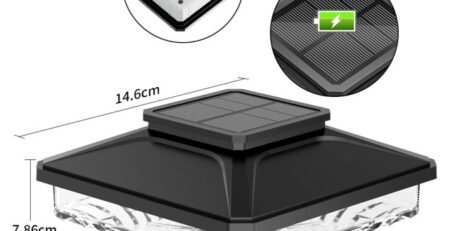
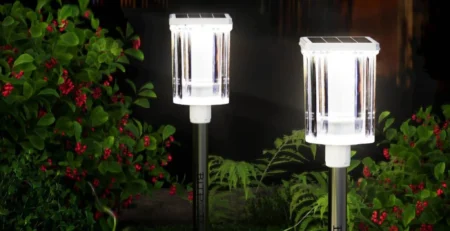

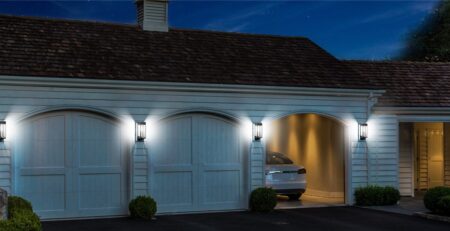
Leave a Reply